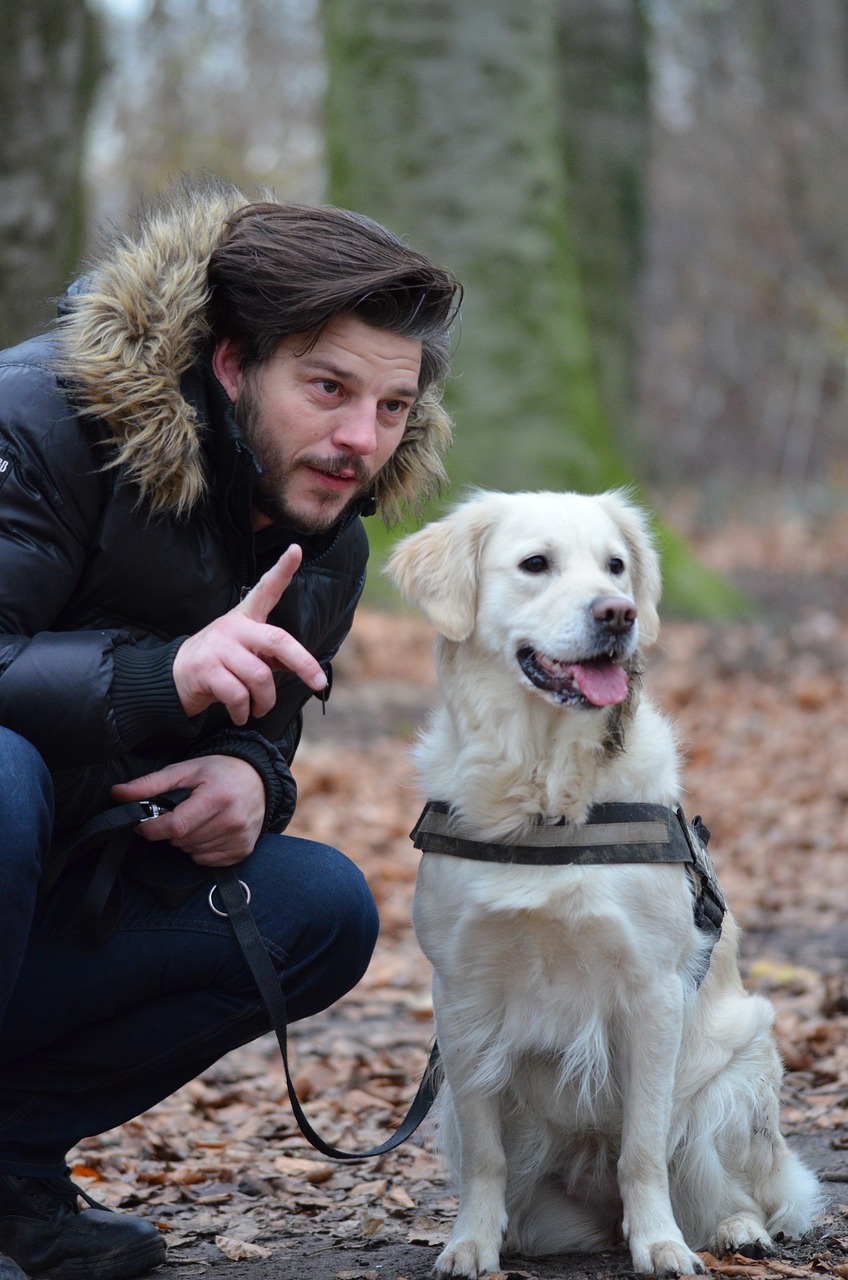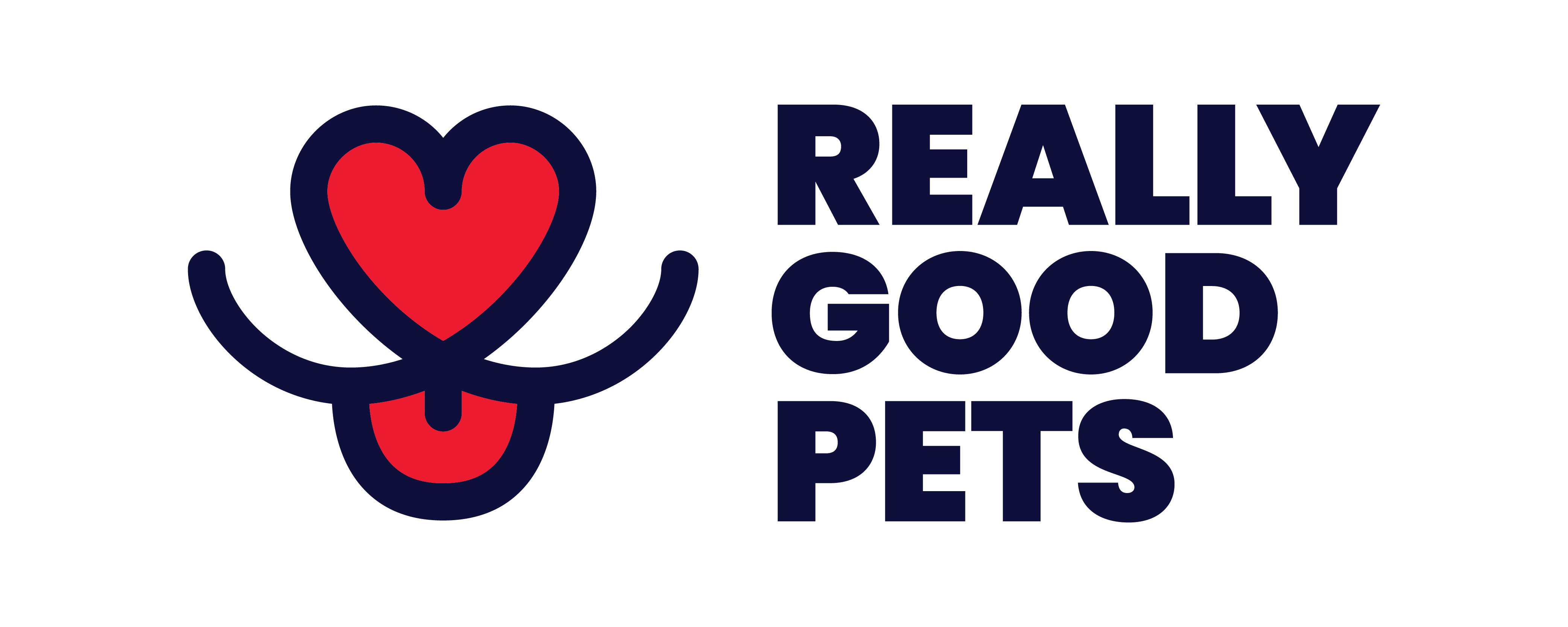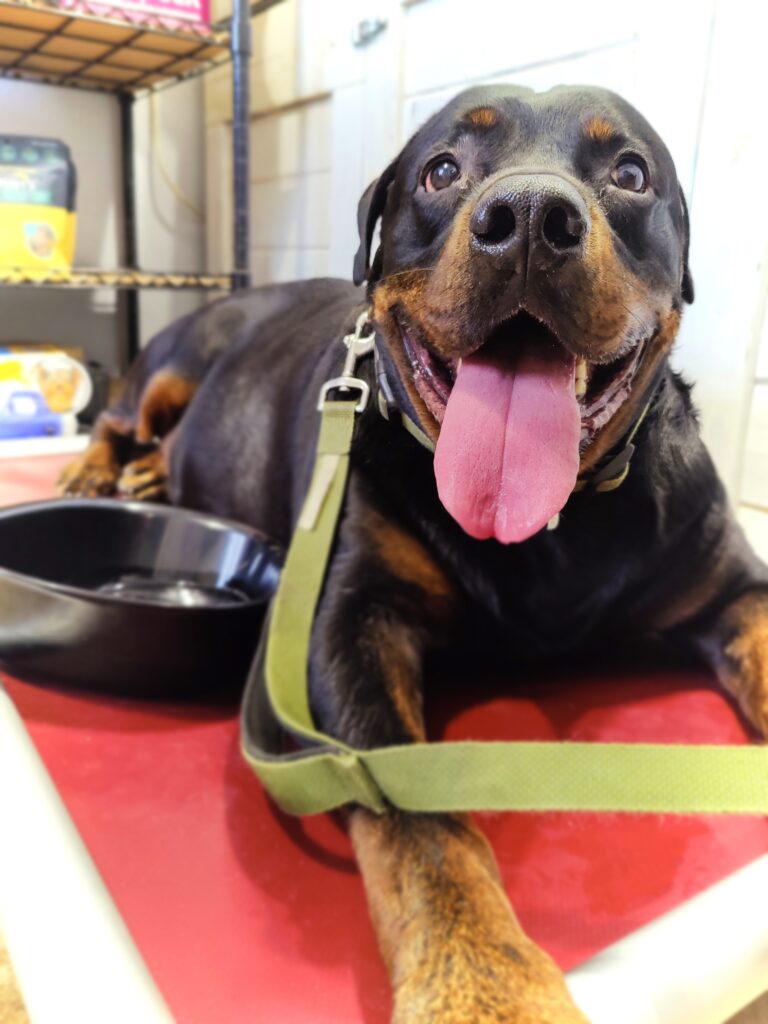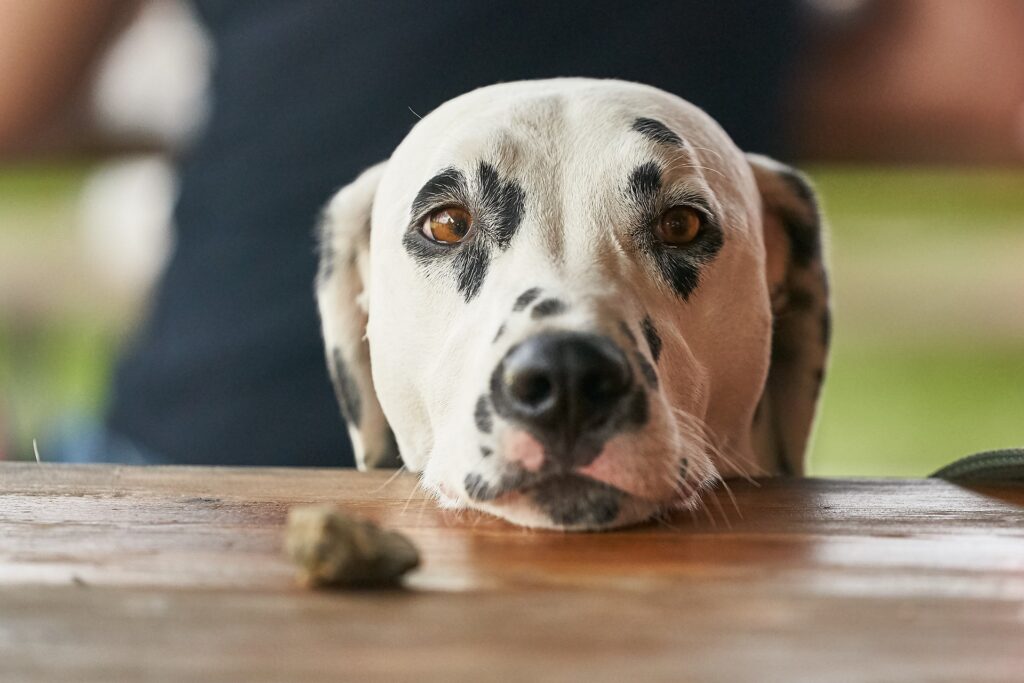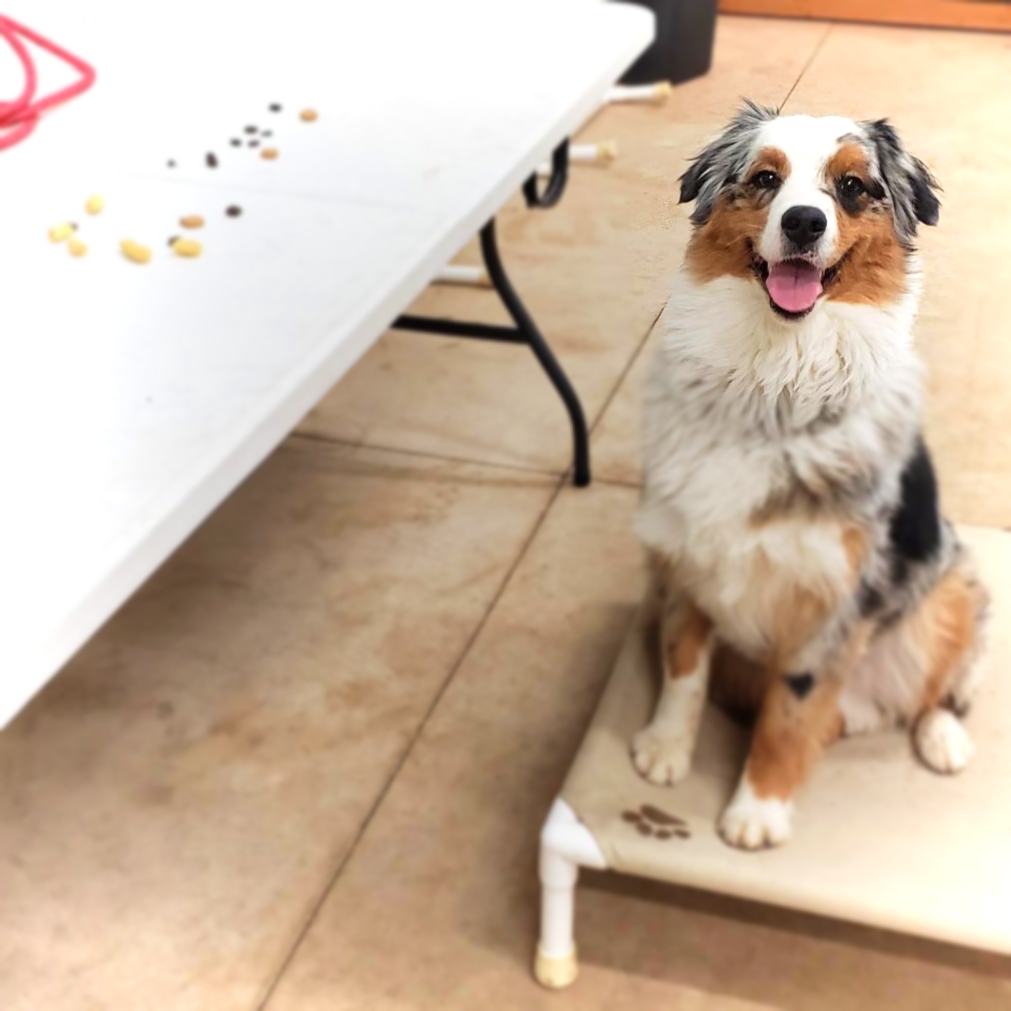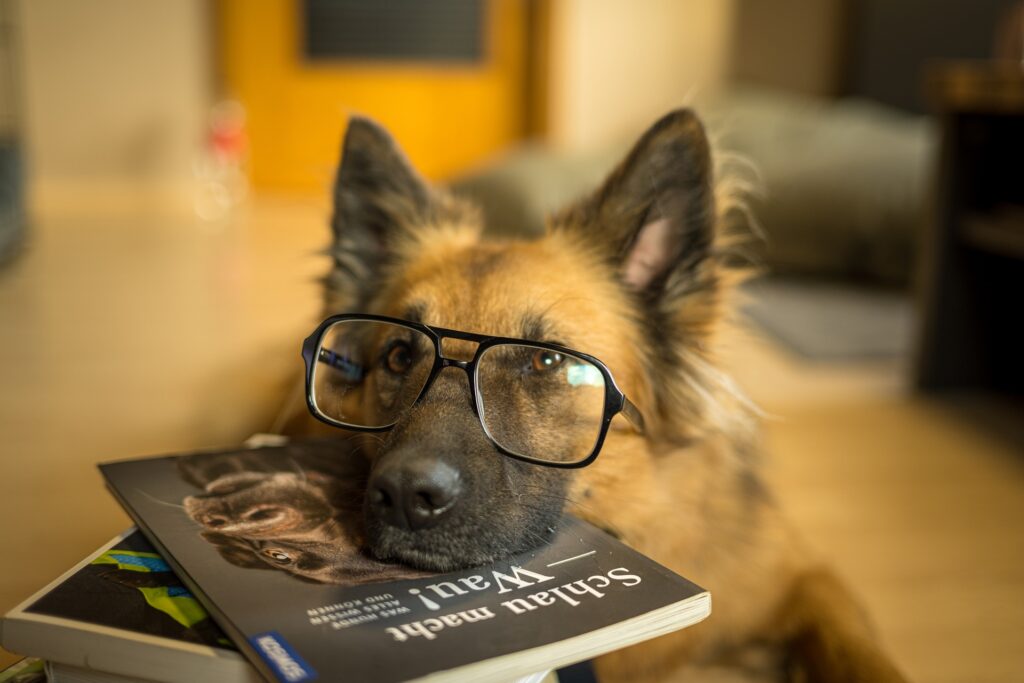
What is the one thing you wish your dog would do but no matter how hard you try to plan a training session around that goal, you can’t seem to get the results you’re looking for?
Maybe your dog isn’t coming inside before you leave for work, begging at the dinner table, door dashing, pulling on leash, or barking. No matter what the behavior is, you don’t have to keep living with it. Training dogs to work on tough behaviors is crucial to help us keep our heads and live peaceably with our dogs.
But knowing how to set up your training sessions is hard. Training can feel insurmountable when the behavior feels out of your control. Even we as trainers have been there with our own dogs in the past. Ask any trainer and they’ll tell you about a skill they had to break down and work on for a while to help their own personal dog.
For me, it was potty training. I had taught several dogs potty training skills in the past with success. But my own dog presented new challenges that I had to break down and help her with. You can have all the training knowledge in the world, but unless you know how to set up your training sessions for success, it can feel like you’re running in circles trying to find the answer.
Since it’s back to school season, we’ve decided to give you our top tips for creating successful training sessions that help you achieve real world goals. After all, if your training sessions don’t help you advance your training goals for real life, it can stress you and your dog out. We want to make sure you have a good time teaching and working on your real life goals.
What do you want?
Dogs (and humans) struggle to succeed when expectations are unclear. When we look at behavior we’d like to change, we usually focus on the problem and not the solution.
We’ll use begging at the table as an example. Problems for extreme begging behavior include, but are not limited to, dogs climbing into laps, sticking their noses in food, licking food, and stealing food.
This is really annoying when you’re trying to enjoy your meal at the end of the day and you’re hungry. This is the problem. But what is the solution? What do you want your dog to do?
The good news is, there are options. One option is to teach your dog to lay down at your feet when you are eating. You could also teach them a place cue where they lay down and settle on their spot, like a cot or a dog bed. If your dog is doing either of these behaviors, it means they cannot do the unwanted behaviors listed above. The desired behavior we want is not compatible with the problem we’re experiencing.
Notice how these solutions are specific. You want the dog to lay down in a particular area or be in a defined space. That’s an expectation that can be easy for your dog to understand and easy for you to see. If you just want your dog to not put their nose in your lap, that leaves a lot of room for interpretation about what behavior you are looking for. It’s hard to teach goals that are not specific.
An analogy that helps many people in this situation is thinking about how taxi drivers work. When you get in a taxi and the driver asks you where you’d like to go, you don’t say “Not Scissortail Park and not Sam Noble Museum.” Your taxi driver might just end up repeating their question at that point. If all you do is keep telling them where you don’t want to go, they might just take you to the hospital.
We have to do the same thing with our dogs. Make sure when you’re looking at your training sessions, you know exactly what you want your dog to do. If you’re not sure that your goals are well defined, ask someone to watch your training session who doesn’t know what the end goal is. If they cannot tell you when you’re done what they think you’re training your dog to do, you might need to modify your training plan.
Break it down:
This tip cannot be overstated. Most times we struggle with our training plans because we do too many steps at once. For example, if I want to teach my dog to go to place while I eat dinner, I have to make sure my dog knows what the place cue is. If I’ve never taught this skill before to my dog, I would start by teaching that getting onto the place with all four feet is the first step. From there, I would start teaching a sit or a down to encourage settling. And from there I would make sure my dog understood to stay on the place for a certain duration before I added anything else.
If I try to sit down to eat a meal and teach my dog to go to place at the same time, I’m probably doing too many new skills at once. This can cause frustration for my dog and me.
First of all, I am hungry, so I am not in the best state to train. Second, my dog is not only trying to learn a new skill, but I’m also expecting them to do it while food distracts them. Third, I am sitting at the table away from them, a potentially difficult distance for them to start with.
I need to break down each of these elements. Breaking down the little pieces of the picture you’re trying to train for actually helps training go faster and prevents dogs from guessing what the right answer is. Sometimes, there are little pieces of the picture you didn’t realize you needed to work on.
For example, if I’ve taught my dog to go to place while I am standing next to their place, that’s a good starting point. However, I know that I am eventually going to sit down at the table. I need to have a chair next to their place so that I can practice sitting down near my dog while teaching them to stay on place.
Once I have that accomplished, can I walk away and sit in the chair farther away from them? Can I sit at a table quietly? Can I sit at the table with a snack?
Each of these elements can be broken down to make sure we go at the dog’s pace for the training session. Some dogs fly through these steps fairly quickly while others need certain aspects broken down.
A dog who is very attached to you may have a hard time being away from you while they are on their place, but be okay with you sitting nearby for an extended period of time. For those dogs, we have to work a little slower on the steps it takes to be away from them. For dogs that don’t seem to mind being in their own space away from you, it might be the food element that is the hardest to work on.
Knowing your dog as an individual can be really helpful in setting up training sessions and training plans. Going through these different breakdowns can also highlight your dog’s strengths and weaknesses if you’re just starting a training goal together or are new to each other.
Set the Stage:
Our dogs can be masters at picking out little differences between our training sessions and the real world. While it is important to break skills down to a manageable level, it is just as important to think about what you want the eventual picture to look like. Your training plan should have a long term perspective on what you want the finished goal to look like and where you want it to happen.
For example, if I am teaching my dog to stay on place to curb begging behavior, I need to make sure I practice in the space where I want her to eventually do the skill. Practicing in other areas of the house is good for getting good manners in different parts of the home, but if I practice in the living room while watching T.V. and don’t practice in the dining room where I eat my meals, that skill might not be as strong in the dining room as it is in the living room. Dogs are masters at reading the context of a situation.
Dogs are also really good at noticing when training looks like a training session. If I wear my treat pouch when doing my training sessions but then don’t wear my treat pouch when I’m testing the waters for a dress rehearsal, my dog is going to know that something looks different.
If I don’t want to wear my treat pouch while at the dinner table, then where do I want my rewards to be? Am I going to get up to get my dog a reward in a separate area or am I going to have a special dish that sits near me so I can easily reward my dog without having to get up out of my seat? My pouch may be easier to use in the beginning, but I need to look at what I want things to look like in the long term.
I’ve known dogs who notice their people’s clothes and shoes are different during training sessions versus real life. So if you’re hitting a wall where your dog seems to be able to tell the difference between training and real life scenarios, look at the picture of your training sessions and see if there are any details you can add to make it mimic real life better.
Manage your environment:
This can be one of the more difficult things to remember to do when we’re working with our dogs. If I let my dog practice the behavior I don’t want to see without having a plan, then my dog isn’t practicing the behavior I want to see more.
In the example of begging at the table, when I know I may be a bit irritable with low blood sugar or lacking in my morning caffeine, I am not going to try to train my dog. My dog and I may not be ready for that scenario depending on how far along I am in my training plan.
Instead, I’m going to do us both a favor and manage the situation. While eating my meal I may opt to have my dog in her kennel with a snack of her own, or perhaps behind a baby gate in her own space out of the dining room. Once I have finished my meal, if I’m feeling up for it I may decide to train my dog before taking the dishes off the table. Empty dishes that still have food smells can make for a great set up for a training session.
Keep it short and sweet:
Training sessions require dogs to work their brains. Depending on how old your dog is and how much training experience they have, this can be a lot of work. Your dog can be doing the mental equivalent of learning calculus for the first time. We want our dogs to have fun during training and enjoy the process. This makes them excited to work and enjoy training time as bonding time. So keeping your training sessions short is key. Doing lots of short sessions throughout the day or with breaks in between is much more effective than big long sessions.
The length of a session is going to depend on the dog. Some dogs like working longer than others on certain skills. Knowing when your dog needs a break is key, but don’t forget that you’ll probably need a break, too. If you find that your dog is disengaging with you and the session, it might be time to take a step back and look at the other elements of your training plan. We like to see our dogs eager to work and figure out the training game.
A good guideline to follow if you need one to start is doing five to ten minute training sessions. Sometimes I will do a training session while my tea steeps in the morning. Since I already have a timer on, it keeps me accountable for the time and I make sure to stop my session on a high note before my dog wears out.
As you practice more with your dog, it will get easier to tell when they are wearing out and are done with a session. It takes time to get to know each other and learn our dog’s needs.
The most important part of training is to have fun. If applied, these few tips will take your training to the next level and set you both up for success.
Sometimes it helps to have an outside look at your training set ups. If you’re struggling with getting your training plan to take off, reach out to us. We help people take their training to the next level, whether that is through group classes, private training, or drop-off training.
Allowing us to get to know you and your dog better can help us come up with a training plan tailored to your needs. We can help you lay out a plan for success.
